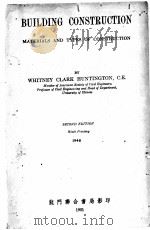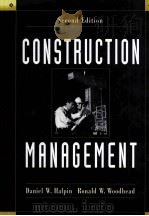《PRACTICAL FORMWORK AND MOULD CONSTRUCTION SECOND EDITION》
| 作者 | J.G.RICHARDSON,F.I.W.M. 编者 |
|---|---|
| 出版 | APPLIED SCIENCE PUBLISHERS LTD |
| 参考页数 | 294 |
| 出版时间 | 没有确切时间的资料 目录预览 |
| ISBN号 | 0853346291 — 求助条款 |
| PDF编号 | 815818838(仅供预览,未存储实际文件) |
| 求助格式 | 扫描PDF(若分多册发行,每次仅能受理1册) |
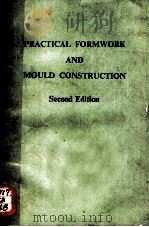
CHAPTER 1 DEFINITION OF DESIGN AND THE APPROACH TO FORM AND MOULD CONSTRUCTION1.1 Introduction1
1.2 The architect4
1.3 The engineer6
CONTENTS7
PREFACE TO SECOND EDITION7
1.4 The contractor or supplier and his staff7
1.5 Sub-contractors and trades personnel9
2.1 The formwork consultant11
CHAPTER 2 PLANNING AND CONTROL OF FORM AND MOULD DESIGN11
2.2 The contractor's design department12
2.3 Design carried out on site14
2.4 Mould design15
2.5 Sub-contractors15
CHAPTER 3 THE FACTORS THAT GOVERN FORM AND MOULD DESIGN17
3.1 Specification and surface finish17
3.2 Concrete considerations19
3.3 Formwork construction20
3.4 Placing considerations22
3.5 Accuracy24
3.6 Striking and demoulding26
3.7 Striking times28
3.8 Handling considerations31
3.9 Mould requirements32
CHAPTER 4 PRELIMINARY CONSIDERATIONS GOVERNING CONSTRUCTIONAL DESIGN35
4.1 Interdependence of activities35
4.2 Precast activity relationships36
4.4 The activities of the formwork designer37
4.3 Planning arrangements37
CHAPTER 5 BASIS OF MODULAR DESIGN APPLIED TO MOULD AND FORMWORK43
5.1 The optimum profile43
5.2 Lifts and bay arrangements46
5.3 Panel details47
5.4 Vertical form section49
5.5 Continuity and support50
5.6 Precast concrete—mould design52
5.7 The basic profile54
6.2 Provision of drawings and details58
6.1 Choice of material58
CHAPTER 6 DETAILING THE FORMWORK SYSTEM58
6.3 General assembly drawings61
6.4 Sectional details61
6.5 Panel details64
6.6 Bay layouts and beam details65
6.7 Sketches and schedules67
6.8 Mould details68
CHAPTER 7 FORM AND MOULD MATERIALS 1—PURPOSE MADE AND PROPRIETARY STEEL FORMWORK7.1 Steel formwork72
7.2 Sheathing arrangements74
7.3 Adjustable steel props75
7.4 Telescopic centres77
7.5 Tie arrangements78
7.6 Release agents79
7.7 Retarders81
CHAPTER 8 FORM AND MOULD MATERIALS 2—TIMBER,TIMBER-DERIVED MATERIALS,CONCRETE AND PLASTICS8.1 Timber83
8.2 Plywood87
8.3 Hardboard90
8.5 Plaster and concrete91
8.4 Particle board91
8.6 Plastics92
8.7 Alloys and other materials94
8.8 Formers for hollows and through-holes95
CHAPTER 9 THE MANUFACTURE OF FORMWORK AND MOULDWORK98
9.1 Timber mould and form manufacture98
9.2 Steelmould and form fabrication104
9.3 Plastics working107
CHAPTER 10 CONSTRUCTION OF In SITU WORK 1—FOUNDATIONS AND WALL FORMATION10.1 Foundations and ground beams108
10.2 Kickers112
10.3 Column bases115
10.4 Ducts and pockets115
10.5 Fixings and fastenings117
10.6 Wall forms119
10.7 Single-sided walling128
10.8 Stairs and landings130
10.9 Wall construction—general details132
10.10 Circular and conical walling135
CHAPTER 11 CONSTRUCTION OF IN SITU WORK 2—COLUMN,BEAM AND SLAB FORMATION11.1 Column forms140
11.2 Beam forms149
11.3 Stair formwork154
11.4 Standing supports155
11.5 Reinforced concrete slab formwork159
11.6 Stopends163
CHAPTER 12 CONSTRUCTION OF MOULDS FOR PRECAST CONCRETE167
12.1 General considerations167
12.2 Precast piles168
12.3 Floor units and decking panels171
12.4 Moulds for mass production173
12.5 Moulds for frame components175
12.6 Mould construction—general176
12.7 Stopend construction181
12.8 Bridge beam moulds183
12.9 Stack casting184
12.10 Ducts for tendons185
12.11 Precast stairs186
12.12 Textured finishes186
12.13 Ducts,culverts and subways188
12.15 Tilting frame manufacture189
12.14 Precast products189
CHAPTER 13 CONSTRUCTION OF FORMWORK FOR SPECIAL APPLICATIONS,ARCHITECTURAL FEATURES AND SCULPTURE13.1 Sculpture and low relief work191
13.2 In situ moulded surfaces192
13.3 General considerations193
CHAPTER 14 MODERN STEEL FORMWORK SYSTEMS(I.Dunkley,Managing Director,Datron GelLtd.)193
14.1 Wallform196
14.2 Tableform198
14.3 Tunnel forms202
14.4 Special forms204
14.5 Precasting206
14.6 General207
CHAPTER 15 PLASTICS AS A MOULD MATERIAL(Peter J.Owen,Director,Bondeglass-Voss Ltd.)15.1 What does a plastics mould material offer?208
15.2 Glass reinforced plastics(grp)209
15.3 Storage of materials209
15.4 Tools and equipment210
15.5 Measuring equipment210
15.6 Polyester resins211
15.7 Catalyst(hardener)211
15.9 The master mould212
15.8 Glassfibre212
15.11 Mould reinforcement213
15.12 Laminating213
15.10 Release agents213
15.13 Usage214
15.14 Release oils215
15.15 Thermoplastics moulds215
15.16 The method216
15.17 Concrete216
15.19 As a mould material217
15.18 Two-part polyurethanes217
15.20 Other plastics mould products219
15.21 Expanded plastics219
15.22 Materials220
CHAPTER 16 SPECIAL STEEL FORMWORK—A CASE STUDY(P.R.Luckett,Technical Director,Stelmo Ltd.)225
CHAPTER 17 SLIPFORM(C.J.Wilshere,JohnLaing Design Associates Ltd.)235
17.1 Introduction235
17.2 Detailed description236
17.4 Equipment237
17.3 Structural design considerations237
17.5 Organisation238
17.6 The start239
17.7 Holes and pockets240
17.8 Special aspects240
17.9 Conclusion240
CHAPTER 18 FORM CONSTRUCTION—TIE ARRANGEMENTS(C.J.Weller,The Sunderland Forge Engineering Co.Ltd.)244
CHAPTER 19 THE ACTIVITIES OF THE FORMWORK DESIGN DEPARTMENT(K.Adams,Chairman,Joint Formwork Committee,Institution of Structural Engineers)244
19.1 Factors that dictate the decisions made256
19.2 The importance of attention to detail257
19.3 Preparation of drawings258
19.4 Floor slab construction259
APPENDIX GROUP EXERCISES ON FORMWORK TOPICS263
Formwork exercise Ⅰ263
Formwork exercise Ⅱ273
Planning a concreting operation286
BIBLIOGRAPHY287
INDEX289
《PRACTICAL FORMWORK AND MOULD CONSTRUCTION SECOND EDITION》由于是年代较久的资料都绝版了,几乎不可能购买到实物。如果大家为了学习确实需要,可向博主求助其电子版PDF文件(由J.G.RICHARDSON,F.I.W.M. APPLIED SCIENCE PUBLISHERS LTD 出版的版本) 。对合法合规的求助,我会当即受理并将下载地址发送给你。
高度相关资料
-
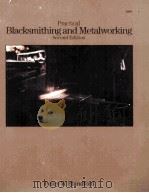
- Practical blacksmithing and Metalworking Second Edition
- 1988 TAB BOOKS Inc
-

- PRACTICAL ETHICS SECOND EDITION
- 1993 CAMBRIDGE UNIVERSITY PRESS
-

- PRACTICAL BOTANY SECOND EDITION
- 1921 W.B. CLIVE
-

- Practical mathematics Second Edition
- 1984 Wiley
-

- PRACTICAL SECTION CUTTING AND STAINING SECOND EDITION
- 1951 J. & A.CHURCHILL LTD.
-
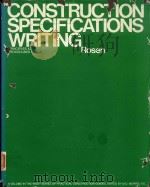
- CONSTRUCTION SPECIFICATIONS WRITING PRINCIPLES AND PROCEDURES SECOND EDITION
- 1981 JOHN WILEY & SONS
-

- SURVEYING FOR CONSTRUCTION SECOND EDITION
- 1974 MCGRAW-HILL BOOK COMPANY
-
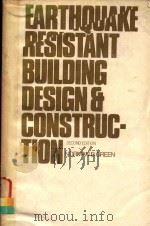
- EARTHQUAKE RESISTANT BUILDING DESIGN AND CONSTRUCTION SECOND EDITION
- 1981 VAN NOSTRAND REINHOLD COMPANY
-
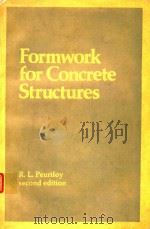
- FORMWORK FOR CONCRETE STRUCTURES SECOND EDITION
- 1976 MCGRAW-HILL
-
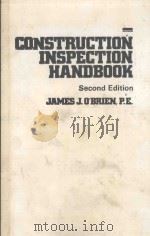
- CONSTRUCTION INSPECTION HANDBOOK SECOND EDITION
- 1983 COPYRIGHT
-

- PRACTICAL ELECTROCARDIOGRAPHY SECOND EDITION
- 1957 THE WILLIAMS & WILKINS COMPANY
-

- FUNDAMENTALS OF BUILDING CONSTRUCTION MATERIALS AND METHODS SECOND EDITION
- 1990 JOHN WILEY & SONS
提示:百度云已更名为百度网盘(百度盘),天翼云盘、微盘下载地址……暂未提供。➥ PDF文字可复制化或转WORD
